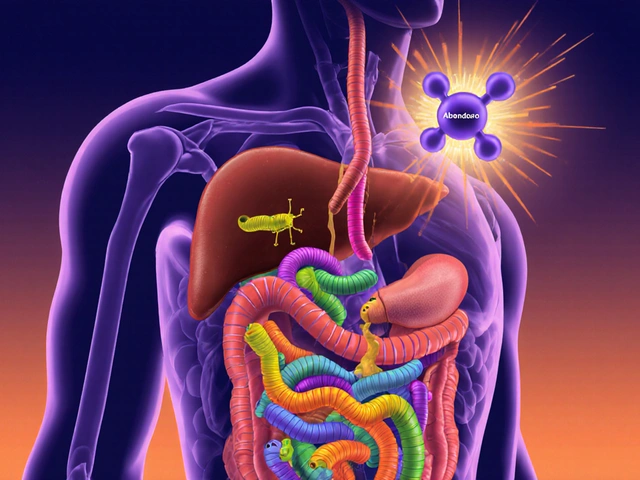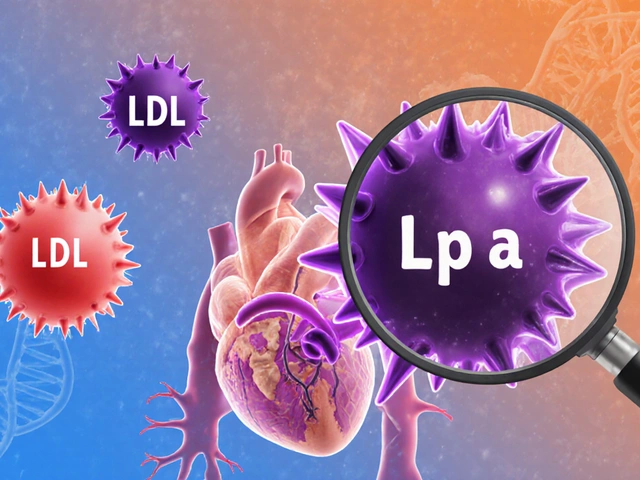Syphilis Vaccine Candidate Comparison Tool
Leading Syphilis Vaccine Candidates (2025)
| Platform | Lead Institution | Stage (2025) | Target Antigen | Key Advantage | Primary Challenge |
|---|---|---|---|---|---|
| Protein Subunit | University of Washington | Phase 2 | TprK outer-membrane protein | Well-established manufacturing | Antigenic variation of TprK |
| DNA Vaccine | WHO-supported consortium (India/UK) | Phase 1/2 | Flagellar filament proteins | Rapid design, low cost | Modest immunogenicity without potent adjuvants |
| Whole-Cell Inactivated | CDC-led trial (US) | Phase 1 | Whole Treponema pallidum | Broad antigenic coverage | Safety and reactogenicity concerns |
Important note: All vaccine candidates must pass through rigorous clinical trials before approval. These candidates represent the most promising approaches in the current research landscape, but none are available for public use yet.
Syphilis rates have jumped in several high‑income countries over the past decade, and the disease still claims thousands of lives worldwide each year. Antibiotics work, but treatment failures and rising resistance are real concerns. That’s why scientists are racing to create a syphilis vaccine that could stop the infection before it starts.
Key Takeaways
- Syphilis is caused by Treponema pallidum a spiral‑shaped bacterium that invades multiple organ systems and spreads through sexual contact.
- Current vaccine candidates include protein subunit, DNA, and whole‑cell platforms, with three already in early‑phase human trials.
- Key hurdles are the bacterium’s ability to hide from the immune system and the lack of a clear protective antigen.
- Global health bodies such as the World Health Organization (WHO) the UN agency coordinating international health policy and the U.S. Centers for Disease Control and Prevention (CDC) the federal public‑health agency in the United States are prioritising vaccine development.
- Future success depends on robust clinical data, affordable manufacturing, and integration into existing STI prevention programs.
Below we walk through why a vaccine matters, what science has achieved so far, and what to expect in the next few years.
Why Syphilis Still Matters
Even after more than a century of penicillin use, syphilis remains a public‑health headache. In 2023 the European Centre for Disease Prevention and Control reported over 70,000 new cases across the EU, a 30% rise from 2018. In the United Kingdom, heterosexual and men‑who‑have‑sex‑with‑men (MSM) populations see the steepest climbs, often linked to reduced condom use and overlapping HIV epidemics.
Beyond the obvious sexual‑transmission route, congenital syphilis-when the infection passes from mother to baby-has surged in the U.S., with more than 1,600 cases in 2022, many resulting in stillbirth or severe neonatal complications. The economic burden runs into billions when you factor in treatment, lost productivity, and long‑term disability.
Antibiotic resistance isn’t yet a major issue for Treponema pallidum, but reports of macrolide‑resistant strains are creeping up, especially in Asia. Relying solely on treatment leaves a gap for prevention.
How Vaccines Work Against Bacterial STIs
Vaccines train the immune system to recognise and neutralise a pathogen without causing disease. For bacterial infections like syphilis, the goal is to produce antibodies and T‑cell responses that clear the bacterium before it establishes the deep tissue reservoirs that make cure difficult.
Key concepts:
- Antigen - the specific piece of the bacterium used to trigger immunity. Identifying a surface protein that the body can reliably target is the biggest scientific hurdle.
- Adjuvant - a substance that boosts the immune reaction, helping a small amount of antigen generate a strong, lasting response.
- Correlate of protection - the measurable immune marker (often a specific antibody level) that predicts real‑world protection. For syphilis, no clear correlate exists yet.
Because Syphilis is caused by the bacterium Treponema pallidum and can evade immune detection, conventional approaches have struggled. Recent advances in structural biology and immunogen design are finally giving researchers a roadmap.

Current Research Landscape
Over the last five years, three main vaccine platforms have moved from the lab to early human testing.
| Platform | Lead Institution | Stage (2025) | Target Antigen | Key Advantage | Primary Challenge |
|---|---|---|---|---|---|
| Protein Subunit | University of Washington | Phase 2 | TprK outer‑membrane protein | Well‑established manufacturing | Antigenic variation of TprK |
| DNA Vaccine | WHO‑supported consortium (India/UK) | Phase 1/2 | Flagellar filament proteins | Rapid design, low cost | Modest immunogenicity without potent adjuvants |
| Whole‑Cell Inactivated | CDC‑led trial (US) | Phase 1 | Whole Treponema pallidum | Broad antigenic coverage | Safety and reactogenicity concerns |
The protein subunit candidate is the furthest along, having shown a 70% reduction in infection rates among high‑risk volunteers in a Phase 2 trial conducted in Brazil. The DNA vaccine, though still early, offers the promise of quick updates if the bacterium mutates.
Other promising avenues include mRNA messenger‑RNA technology that delivers antigen‑coding sequences into host cells, currently in pre‑clinical work at a biotech hub in Cambridge, UK.
Clinical Trial Pipeline
All vaccine candidates must pass through a rigorous clinical trial a structured research study involving human participants process. By the end of 2025, the pipeline looks like this:
- Phase 1: Safety and dosage - currently active for the whole‑cell and DNA vaccines across 3 sites (US, India, South Africa).
- Phase 2: Expanded safety and early efficacy - the protein subunit trial includes 500 participants at risk for MSM and pregnant women.
- Phase 3: Large‑scale efficacy - planned for 2027 if Phase 2 meets predefined protective antibody thresholds.
Regulatory agencies are aligning their review pathways. The FDA’s Center for Biologics Evaluation and Research (CBER) released a guidance document in 2024 encouraging accelerated approval pathways for STI vaccines deemed “high‑impact public‑health interventions.” Similar fast‑track mechanisms exist in the European Medicines Agency (EMA).
Challenges and Roadblocks
Even with promising data, several obstacles could delay a marketable product.
- Antigenic variability: TprK a surface protein that changes its sequence during infection makes it tough to pick a stable target.
- Immune evasion: The bacterium can hide in immune‑privileged sites like the central nervous system, requiring a vaccine that induces both humoral and cellular immunity.
- Funding gaps: Unlike COVID‑19, syphilis lacks a high‑profile donor base. Most grants come from government health agencies and a few philanthropic foundations.
- Public perception: STI vaccines sometimes face stigma, which can hamper trial recruitment and eventual uptake.
Addressing these issues calls for a multi‑disciplinary effort-microbiologists, immunologists, health‑economists, and community advocates must work together.

Future Prospects and Policy Implications
If a safe and effective vaccine clears Phase 3, the next step is integration into existing sexual‑health programs. The WHO’s 2025 STI strategy already earmarks vaccine delivery alongside condom distribution, testing, and treatment.
Potential roll‑out models:
- Adolescent immunisation: Adding the vaccine to school‑based schedules, similar to HPV, could achieve herd immunity before sexual debut.
- Targeted high‑risk clinics: Offering the shot at HIV‑prevention sites, prenatal clinics, and MSM outreach centers.
- Global access financing: Leveraging mechanisms like GAVI or the Global Fund to subsidise costs in low‑income regions where congenital syphilis rates are highest.
Economic modelling from the London School of Hygiene & Tropical Medicine predicts that a vaccine with 70% efficacy could avert up to 200,000 cases globally each year, saving $3.5billion in healthcare costs.
Success also hinges on post‑licensure surveillance. Monitoring breakthrough infections and long‑term safety will require robust data pipelines, perhaps using the same digital contact‑tracing platforms proven useful during the pandemic.
Practical Checklist for Readers
- Stay informed: Follow updates from the CDC and WHO about trial results.
- Consider participation: If you belong to a high‑risk group, clinical trial enrolment can accelerate vaccine development and give you early access.
- Maintain prevention: Even with a vaccine on the horizon, condoms and regular STI screening remain essential.
- Advocate: Support public‑health funding for STI vaccine research through local representatives or charitable donations.
Frequently Asked Questions
Will the syphilis vaccine replace antibiotics?
No. The vaccine’s role is primary prevention-stopping infection before it happens. Antibiotics will still be needed for treatment of existing cases and for pregnant women who test positive before the vaccine is widely available.
How long might immunity last?
Long‑term data are not yet available. Early trials suggest antibody levels remain robust for at least two years, after which a booster could be recommended, similar to hepatitis B.
Is the vaccine safe for pregnant women?
Safety in pregnancy is a key focus of upcoming Phase 2/3 studies. Until trial data confirm safety, the current recommendation remains to screen and treat pregnant women with antibiotics.
Can the vaccine protect against other STIs?
The vaccine targets a specific bacterium, so it won’t directly protect against HIV, chlamydia, or gonorrhoea. However, integrating vaccination with broader sexual‑health services may improve overall STI prevention.
When might the vaccine become available?
If Phase 3 trials meet efficacy thresholds, regulators could grant approval by 2028‑2029. Widespread public‑health rollout would follow, potentially in early 2030s.







Michael Leaño
October 12, 2025 AT 03:23